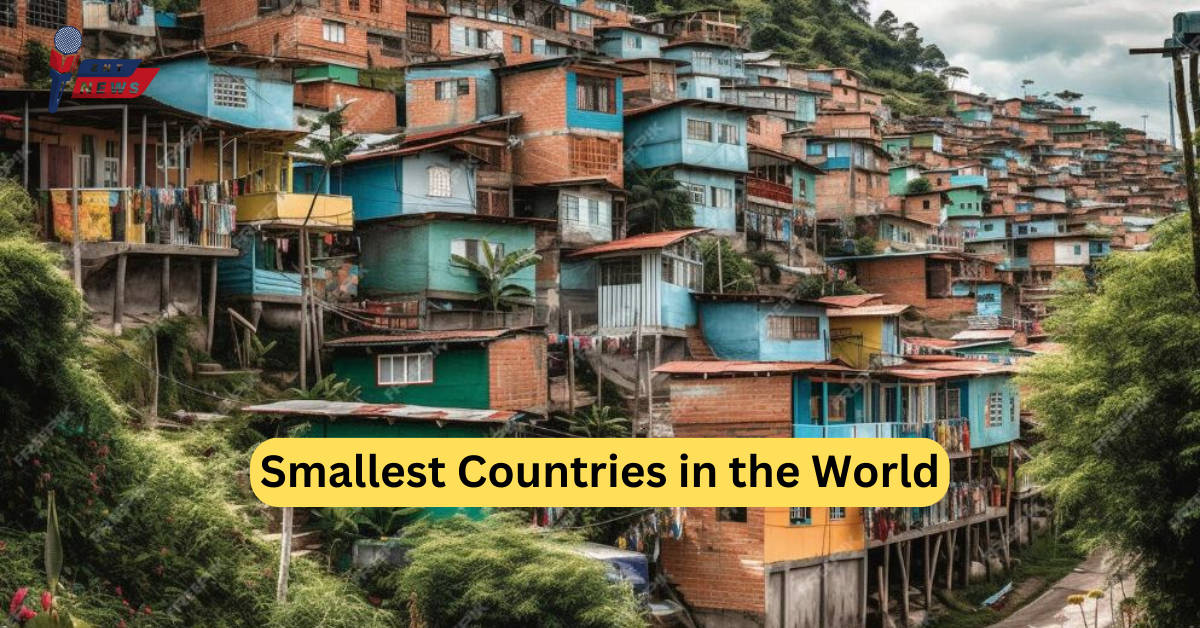Top 10 Smallest Countries in the World
Top 10 Smallest Countries in the World: In a world where significance is often equated with size, there exists a unique category of nations that defy this norm. These diminutive entities, commonly known as microstates or ministates, are distinguished by their minimal land area and population. Join us as we embark on a journey to uncover the smallest countries on our planet, delving into their fascinating details and uncovering the allure of these compact realms.
List of Top 10 Smallest Countries in the World

Vatican City – 0.49 sq. km
Vatican City, an independent and landlocked country nestled within Rome, Italy, holds the prestigious title of the smallest country globally. Established as a sovereign entity in 1929 through the Lateran Treaty, Vatican City boasts not only a minuscule size but also a rich history, cultural significance, and a population estimated at 807. The official language is Italian, and it operates under a unitary theocratic Catholic elective absolute monarchy.
Monaco – 2.08 sq. km
Situated on the French Riviera, Monaco, officially the Principality of Monaco, is a microstate renowned for its opulence and wealth. With a land area of 2.08 sq. km and an estimated population of 39,050, Monaco operates as a unitary parliamentary semi-constitutional monarchy. French is the official language, and it is globally recognized as one of the most expensive and affluent places on Earth.
Nauru – 21 sq. km
Nauru, the third smallest country and the tiniest island nation, covers an area of 21 sq. km in Micronesia. With a population of approximately 10,000, Nauru operates as a unitary parliamentary republic under a non-partisan democracy. Its official language is Nauruan, and the Australian Dollar serves as its currency.
Tuvalu – 26 sq. km
Tuvalu, an island country in Polynesia, spans 26 sq. km in the Pacific Ocean. Comprising three reef islands and six atolls, Tuvalu is situated between Hawaii and Australia. The Tuvaluan Dollar and the Australian Dollar are its currencies, and it operates as a unitary non-parliamentary constitutional monarchy.
San Marino – 61 sq. km
San Marino, also known as the Most Serene Republic of San Marino, is a European microstate enclaved by Italy. Covering an area of 61 sq. km, it operates under a unitary parliamentary diarchic directorial republic. The official language is Italian, and the Euro is its currency.
Liechtenstein – 160 sq. km
Nestled in the Alps between Austria and Switzerland, Liechtenstein, a German-speaking country, spans 160 sq. km. Operating as a unitary parliamentary semi-constitutional monarchy, it is headed by Prince Hans-Adam II, with German as the official language and the Swiss Franc as its currency.
Marshall Islands – 181 sq. km
The Marshall Islands, an island country in Micronesia, covers 181 sq. km in the Pacific Ocean. Operating as a unitary parliamentary republic, it has an executive presidency. The official languages are Marshallese and English, and the US Dollar is the currency.
Saint Kitts and Nevis – 261 sq. km
Comprising two islands in the West Indies, Saint Kitts and Nevis span 261 sq. km. It is the only sovereign federation in the Caribbean and operates as a federal parliamentary constitutional monarchy. English is the official language, and the East Caribbean Dollar is its currency.
Maldives – 298 sq. km
The Maldives, an archipelagic nation in the Indian Ocean, covers 298 sq. km. Operating as a unitary presidential constitutional republic, it is located southwest of Sri Lanka and India. The official language is Dhivehi, and the currency is the Maldivian Rufiyaa and US Dollar.
Malta – 316 sq. km
Situated in the Mediterranean Sea, Malta is an island country covering 316 sq. km. Operating as a unitary parliamentary republic, it has Maltese and English as official languages. The Euro is the currency, and George Vella serves as the president.
Conclusion:
In this exploration of the world’s tiniest wonders, we’ve unveiled the top 10 smallest countries, each with its unique characteristics, culture, and governance. These diminutive nations may be small in size, but their significance transcends their compact borders, offering a fascinating glimpse into the diversity of our global community.
……………….By ZNT News
